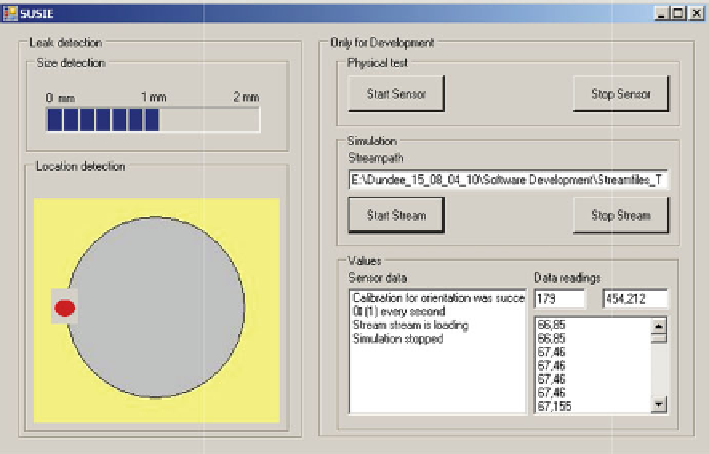Biomedical Engineering Reference
In-Depth Information
Fig. 19
Main screen of the SUSIE programme interface
leak orientations (0
ı
- dorsal, 90
ı
- dextral, 180
ı
- ventral, 270
ı
- sinistral). Based
on this a surgeon will be able to make a decision regarding the severity of the
anastomosis.
The right part was programmed to verify the calibration of the system. It is
always important to calibrate a system correctly before it is used as a standalone
measurement system. A calibration file is stored in the programme directory. It was
decided to use the output at a measuring time from 20s to 80s as experience had
shown that the data was stable and sufficiently separated to make a judgement on
the data at that point.
The first frame “Physical test” is to start and stop a new reading from the
sensor. All results are shown under “Leak Detection” and based on the stored
calibration file. The measurement data is stored as a .txt file for later evaluation.
The middle frame “Simulation” is used to test the programme and the calibration
under well-known conditions. Instead of a real-time reading from the sensor a
stream file is loadable. The advantage of this stream is that the leak size as well as
the orientation of the leak is known through measurements obtained from physical
experiments, therefore the programme result is verifiable. The frame “Value” gives
information for the programme developer about the programme status and the data
theprogrammehastoworkwithanditisusedtodetecterrors.
The program uses a calibration file to calculate the leak size and orientation.
The calibration data is stored as a .txt file that is loadable through the program.
Every line of this table is a dataset and must be compared to the sensor reading or
the stream reading (Fig.
20
). The workflow of this is as follows:

